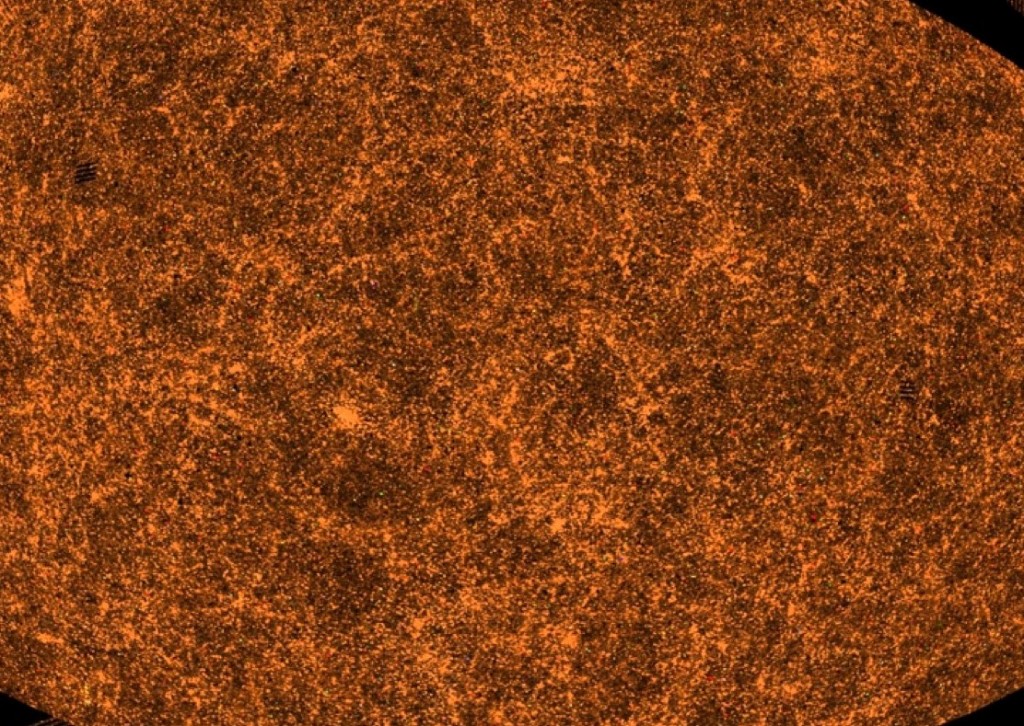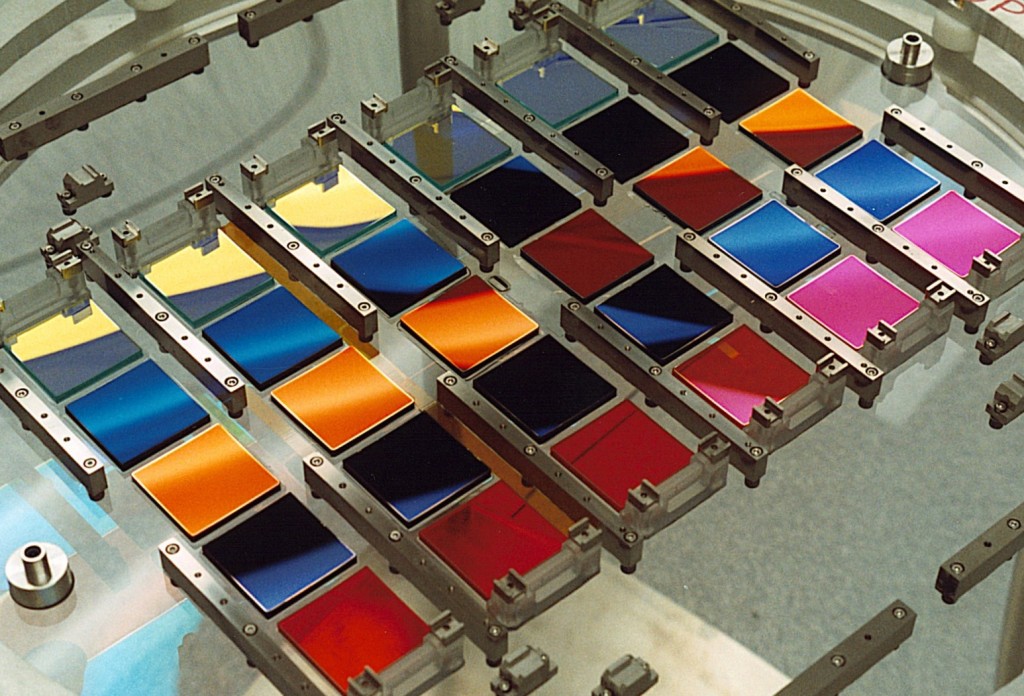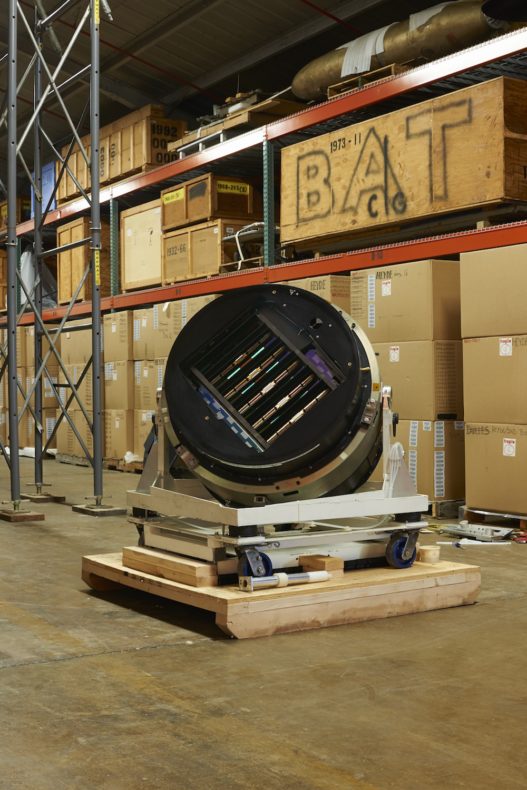 This picture is what the sky really looks like. Click on it. It’s the biggest digital color picture of the sky, the part called the Northern Galactic Cap, and it’s taken years to produce; it’s a trillion pixels, a terapixel and — says the press release from the Sloan Digital Sky Survey — to see it at full resolution, you’d need 500,000 high-def TVs. In it are millions of asteroids, stars, quasars, and galaxies and they’re all free, go download them. It holds, says an astronomer who worked on it, “one of the biggest bounties in the history of science.” The camera that made the picture possible, a faithful and delicate and nearly perfect instrument, is now old news; it’s gathering dust, is out to pasture.
This picture is what the sky really looks like. Click on it. It’s the biggest digital color picture of the sky, the part called the Northern Galactic Cap, and it’s taken years to produce; it’s a trillion pixels, a terapixel and — says the press release from the Sloan Digital Sky Survey — to see it at full resolution, you’d need 500,000 high-def TVs. In it are millions of asteroids, stars, quasars, and galaxies and they’re all free, go download them. It holds, says an astronomer who worked on it, “one of the biggest bounties in the history of science.” The camera that made the picture possible, a faithful and delicate and nearly perfect instrument, is now old news; it’s gathering dust, is out to pasture.
The camera was born in 1987 when a Princeton astronomer named Jim Gunn met an engineer named Morley Blouke who was carrying a polyethylene pizza box and in it was the latest CCD. The current state-of-the-art CCD’s on the Hubble Space Telescope’s principal camera — designed by Jim with CCDs made by Blouke’s company — were 800 pixels on a side, 6400 pixels altogether, meaning a field of view a third of a moon across. The CCD in the pizza box was 2048 pixels on a side, 4 million pixels altogether. With that kind of CCD, Jim, thought, he could build a camera and do a serious wide-angle survey of the sky. So he did, with the help of a large team of astronomers and coders, an international consortium, many years and a lot of money. The camera itself, however, was designed and built by Jim and three other people: a Japanese astronomer named Maki Sekiguchi, an ex-drag-racer/engineer named Michael Carr, and an undergraduate named Connie Rockosi. It took them six or seven years, Jim doesn’t remember for sure.
 The camera has 30 of those pizza-box CCDs, arranged in six columns, five CCDs in each. Hovering a quarter inch over each CCD is a filter that lets in light preferentially, only in a certain band of wavelengths: the r filter is red, the i filter is infrared, the u filter is ultraviolet, the z filter is extremely red, and the g filter is green. The filters are squares of flat, uncannily smooth glass that give the illusion of depth and look to the eye to be variants of reds and golds and greens and blues, meticulously aligned. Michael thinks of it as an emperor’s jewel case; Connie, as a Mondrian stained glass window.
The camera has 30 of those pizza-box CCDs, arranged in six columns, five CCDs in each. Hovering a quarter inch over each CCD is a filter that lets in light preferentially, only in a certain band of wavelengths: the r filter is red, the i filter is infrared, the u filter is ultraviolet, the z filter is extremely red, and the g filter is green. The filters are squares of flat, uncannily smooth glass that give the illusion of depth and look to the eye to be variants of reds and golds and greens and blues, meticulously aligned. Michael thinks of it as an emperor’s jewel case; Connie, as a Mondrian stained glass window.
The camera worked right out of the box, was unprecedentedly accurate, and the older it got, the less maintaining it needed — which was just amazing, said Michael, who’d worked on instruments for Caltech and JPL and NASA; he never seen anything like it. The camera was perfect, said an astronomer who is expert at calibrating cameras, “and I don’t have anybody to tell. When I start talking about saturated stars and photometry, peoples’ eyes just glaze over. I can’t tell it to my wife, I can’t tell it to my colleagues. It was perfectly done and it was just shocking to me.”
The Sloan survey that the camera was built to do is done; the next Sloan surveys after it don’t use cameras; and by now it’s a little small and old-fashioned. So after 10 years of service, 1000 nights, the camera was taken out and retired. Though at first no one knew quite what to do with it — Jim thought it would make a nice coffee table — it will end up at the Smithsonian, on display or not. Connie, who spent her formative years with her face not six inches from the camera, finds this bittersweet. Michael said, “I’d worked my entire career to learn to work on this camera.” Jim says “Well, we all get old,” and the Smithsonian is at least a dignified resting place compared to the previous camera he built: “I have no idea what happened with that one.”
____________
Credits: sky: M. Blanton and the SDSS-III; camera: Michael Carr; camera in basement of Smithonian: Xavier Poultney,SDSS.
And if you’d like a nice book about the Sloan Digital Sky Survey, I happen to have one. Some of this post comes from it.
When Ms. Finkbeiner states “designed and built only by Jim and three other people”, she does a great disservice to the other skilled workers and engineers at Princeton University, Yerkes Observatory and the U.S. Naval Observatory who put many hours and resources into the camera. Virtually all of the mechanical parts for the actual mounting of the CCDs were the product of the instrument shop at the U.S. Naval Observatory in Washington, D.C. I spent many months away from my family to work beside the “favored four” to produce camera electronics, and Maki was far from alone in the personnel coming from Japan.
Fred Harris
U.S. Naval Observatory Flagstaff Station
I know that, Fred, and I’m sorry. I heard privately from another engineer who’d worked on the camera too, saying the same thing. The problem is with telling stories about reality – you can’t have too many characters so you leave people out. I think it was that “only” in that sentence that was annoying, I shouldn’t have put it there, and I’ve taken it out.
I am going to agree with the comments by Mr.Harris. I was just the Instrument Machinist during the 4 years of building the camera in the basement of Peyton Hall. But I saw others, like
George Pauls ,Mamoru Doi, (and Fred H.) who put
their lives on hold for years to put the SDSS together. There are constraints to keep articles brief but other folks,who put in huge amounts of time on this project,aren’t getting any credit.
Brian R Elms
National Astronomical Observatories of Japan
Yes, Brian, as I said to Fred just above and to Georg in an email, I know about the unsung heroes and I’m sorry for leaving them out. I think a lot of us feel like we do valuable work that not just anyone could do and for little or no money and credit.